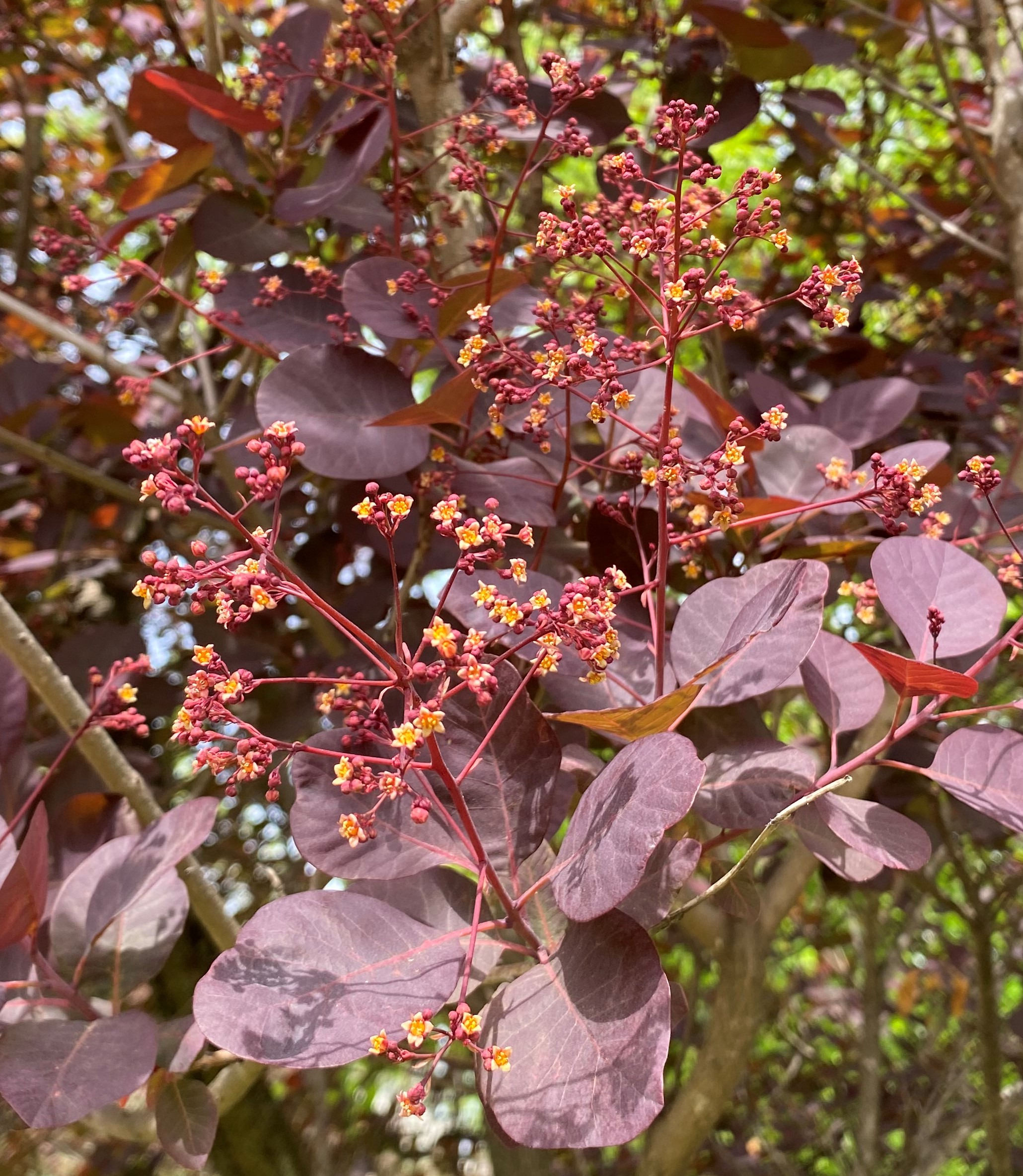Smoketree: A sizzling hot plant that’s not just for summer

COLUMBIA, Mo. — Unlike most of Missouri’s native trees, the American smoketree displays spectacular colors throughout the growing season, says University of Missouri Extension state horticulturist Michele Warmund.
American smoketree is a hardy and adaptable small tree or shrub that grows 15 to 30 feet at maturity. It thrives in full sun and in alkaline soils but tolerates slightly acidic and compacted soils.
In spring and summer, the foliage is blue-green. In May, small, greenish flowers appear on open panicles, otherwise known as flower stalks. After the flowers fade, the purple hairs on the panicles become evident, resembling puffs of smoke. In autumn, the foliage of American smoketree turns an intense yellow to red color. Even in winter, the defoliated tree adds interest with its gnarled limbs.
American smoketree can be found growing in the wild in Polk, Taney, Ozark and Douglas counties in Missouri. Nurseries that specialize in native plants sell trees for the home landscape.
Common smoketree is a non-native species introduced into North America in the mid-1600s. This species is like the American smoketree in growth habit and adapts to a range of soil types. ‘Pink Champagne,’ ‘Purpureus,’ and ‘Smokey Joe’ are cultivars of common smoketree with blue-green summer foliage, tiny yellow flowers and prolific panicles.
‘Black Velvet,’ ‘Flame,’ and ‘Grace’ are hybrids with dark purple foliage during the summer with puffy panicles up to a foot long. ‘Ancot,’ also known as Golden Spirit, has yellow to light green summer foliage that turns scarlet red in the autumn. Flowers have not been observed on Golden Spirit plants; nevertheless, pale pink panicles are conspicuous.
Smoketrees are relatively drought-resistant and usually pest-free, requiring minimal care in the landscape. They can be trained and pruned to a tree form or left to grow as a multi-stemmed shrub.
When needed, smoketrees can be pruned in late winter. Drastically pruning back stems of shrubs will temporarily reduce their size and promote the growth of colorful new foliage. However, the production of the billowy panicles will be sacrificed for the following growing season. When pruning, wear gloves to avoid contact with the wood sap. The sap contains urushiol, which may cause a rash on people sensitive to this compound. In contrast, leaves and panicles are safe to touch.
Miss Clipping Out Stories to Save for Later?
Click the Purchase Story button below to order a print of this story. We will print it for you on matte photo paper to keep forever.

